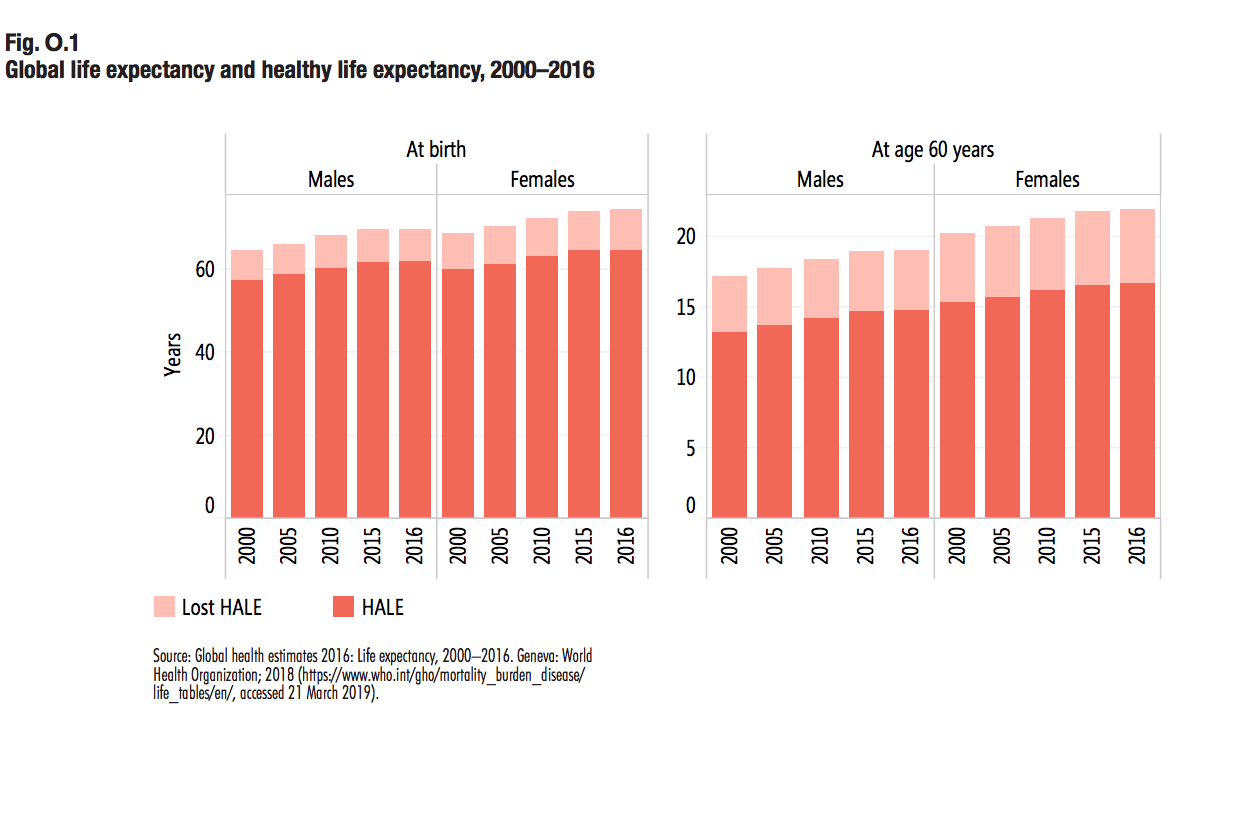Everywhere in the world – but especially in wealthy countries – women live longer than men. Why? According to the latest World Health Statistics Overview published last week by the World Health Organization (WHO), uneven access to health services is a major reason.
The WHO has been publishing the World Health Statistics Overview every year since 2005. But this is the first year it has broken down the statistics by sex.
“Breaking down data by age, sex and income group is vital for understanding who is being left behind and why,” said Dr. Tedros Adhanom Ghebreyesus, the WHO’s director-general, in a press release.
According to the report, the 73 million baby boys who will be born this year will have an average life expectancy of 69.8 years, Meanwhile, the 68 million girls will have an average life expectancy of 74.2 years.
The report says that the difference between male and female life expectancy cannot be pinned to a single or even small number of causes. Some are biological, others are environmental or social, while the availability and use of health services also plays a big role.
For example, of the 40 leading causes of death, 33 contribute more to a shorter male life expectancy than female. These include heart disease, road injuries, lung cancers, lung disease, stroke, cirrhosis of the liver, tuberculosis (TB), prostate cancer and interpersonal violence.
Globally in 2016, deaths from road injuries were twice as high in men as women from age 15, and suicide death rates were 75 percent higher in men as well. Homicide death rates are also four times higher in men than in women, but 20 percent of those homicides are committed by an intimate partner or family member, most of the time against women.


Men’s attitude toward health care also makes a significant difference in their life expectancy.
The report reveals that in cases where men and women face the same disease, men forgo available health services more often than women. For example, in countries where HIV is firmly established in the general population, men are less likely than women take an HIV test or access antiretroviral therapy. They are also more likely to die of AIDS-related illnesses. Male TB patients are also less likely to seek care than female ones.
But where the gap between men and women narrows is in low-income countries, where women often lack access to health services. According to the report, there are fewer than four nursing and midwifery personnel per 1,000 people in more than 90 percent of low-income countries.
The result is that one in 41 women dies from a maternal cause in these countries, compared to one in 3,300 women in high-income countries. Dr. Tedros notes that the maternal deaths of women in poor communities also has a serious impact on the health of their family members and their community and perpetuates a cycle of poverty.
Globally between 2000 and 2016, life expectancy at birth increased by 5.5 years for both men and women combined, but for babies born in low-income countries, their life expectancy (62.7 years) is still more than 18 years lower than those born in high-income countries (80.8 years). While most people in wealthy countries die in old age, nearly one in three deaths in poor countries are of children under 5 years old. And whereas noncommunicable diseases contribute the most to life expectancy differences between men and women in high-income countries, communicable diseases, injuries and maternal conditions are the main contributors to the difference. Often, the disease and conditions that compromise health in poor countries are also preventable and treatable.
Although there have been improvements in more than half of the 43 health-related Sustainable Development Goal (SDG) indicators, the report notes that global progress has stalled or even reversed for five indicators: road traffic mortality, children overweight, malaria incidence, alcohol consumption, official development assistance for water sector and catastrophic health spending – all of which play a significant role in life expectancy.
Additionally, the world is only on track to meet two of the eight health-related SDG indicators that have explicit targets by 2030: lower mortality under age five to at least as low as 25 per 1,000 live births and neonatal mortality to at least as low as 12 per 1,000 live births. And although global progress is on track for these two indicators, the WHO estimates that 51 countries will still miss the under-five mortality target if their current trends continue, and 60 countries will miss the neonatal mortality target.
In order to accelerate progress, the WHO says that just focusing on efforts under the traditional purview of ministries of health is not enough. Instead, it requires a “multisectoral approach that addresses the underlying causes of gender and socioeconomic inequalities.”
“My hope is that governments, health providers, academics, civil society organizations, the media and others use these numbers to … move us closer to a healthier, safer, fairer world for everyone,” said Dr. Tedros.
